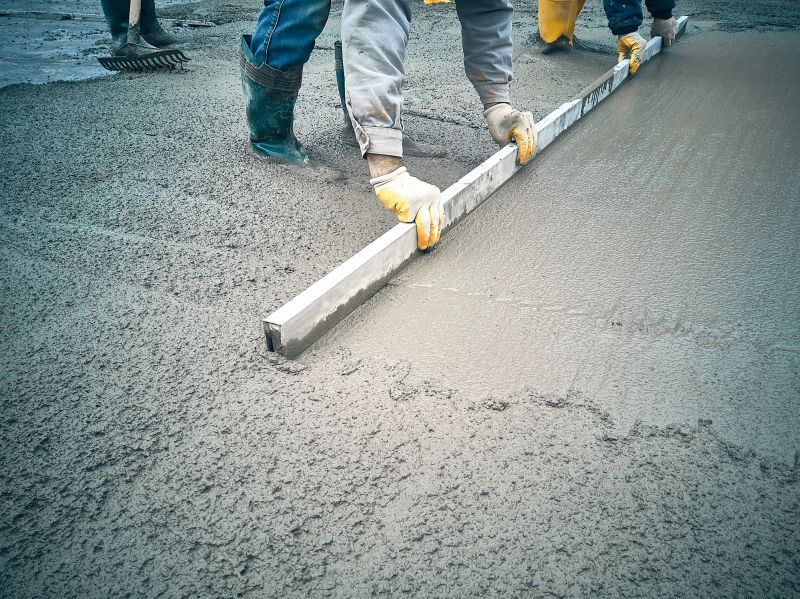Ultimate Guide To Essential Concrete Leveling Products
Learn about the key products that make concrete leveling easier, safer, and more effective for both DIYers and professionals.
 Concrete leveling is a practical solution for addressing uneven or sunken slabs in residential and commercial properties. It involves the use of specialized products designed to restore a flat, stable surface without the need for full replacement. These products are formulated to fill voids, lift slabs, and create a durable, even finish that can improve safety and aesthetics. Whether for driveways, sidewalks, patios, or garage floors, choosing the right products for concrete leveling can make a significant difference in achieving a smooth and lasting result.
Concrete leveling is a practical solution for addressing uneven or sunken slabs in residential and commercial properties. It involves the use of specialized products designed to restore a flat, stable surface without the need for full replacement. These products are formulated to fill voids, lift slabs, and create a durable, even finish that can improve safety and aesthetics. Whether for driveways, sidewalks, patios, or garage floors, choosing the right products for concrete leveling can make a significant difference in achieving a smooth and lasting result.
Top Overall Option
Self-Leveling Concrete Patch
A versatile and user-friendly product designed for small to medium repairs, self-leveling concrete patch offers easy mixing and application, making it suitable for DIY projects. It provides a smooth, durable surface that can bond well with existing concrete, helping to restore a flat and stable appearance. Its quick curing time and compatibility with various concrete types make it a popular choice for homeowners and professionals alike.
Types of Products For Concrete Levelings
Polyurethane Foam Injectors
Used to lift and level sunken slabs by injecting expanding foam beneath the surface, ideal for foundation and driveway repairs.
Cement-Based Patching Compounds
Traditional cement mixtures that fill cracks and voids, suitable for larger repairs and patching.
Self-Leveling Underlayments
Fluid compounds that spread evenly to create a smooth, level surface, often used for interior floors.
Polymer-Modified Mortars
Enhanced mortars that provide increased adhesion and flexibility for repairing uneven slabs.
Hydraulic Cements
Fast-setting cements designed to bond with existing concrete and fill voids quickly.
Epoxy Resin Systems
High-strength resins used for bonding and sealing cracks, offering structural support.
Polyurethane Sealants
Flexible sealants that fill joints and cracks, preventing water infiltration and further damage.
Rapid-Set Repair Mortars
Quick-curing mortars suitable for urgent repairs and small patches.
Liquid Cementitious Pours
Pourable products that can be applied to large areas to restore level surfaces efficiently.
Concrete Resurfacers
Thin coatings that provide a new, smooth surface over existing concrete, improving appearance and durability.
Foam Backer Rods
Used to fill expansion joints and cracks prior to sealing or patching.
Polyurea Coatings
Rapid-curing, flexible coatings for protecting and leveling concrete surfaces.
Grouting Materials
Specialized grouts for filling voids beneath slabs and stabilizing uneven areas.
Fiber-Reinforced Repair Mixes
Concrete mixes embedded with fibers to improve crack resistance and structural integrity.
Popular Choices
Widely used for lifting sunken slabs, these injectors expand to fill voids beneath concrete surfaces.
Commonly selected for small repairs, these patches provide a smooth finish suitable for walkways and patios.
Favored for their quick setting and strong bonding capabilities, suitable for various repair scenarios.
Popular for crack repair and structural bonding, offering high adhesion and durability.
Often used in expansion joints and cracks, these sealants help prevent water infiltration.
Valued for their ease of application over large areas, providing a level surface quickly.
Chosen for their ability to restore the surface appearance and protect underlying concrete.
Ideal for urgent repairs where quick curing is necessary.
Popular for their fast curing times and flexibility in surface protection.
Commonly used for stabilizing and leveling large slabs or foundation repairs.
The process typically involves assessing the extent of the unevenness and selecting appropriate materials that can be injected or applied to correct the surface. Many products are formulated for easy application by both professionals and DIY enthusiasts, featuring quick-setting formulas and minimal odor. Proper preparation, including cleaning and surface preparation, is essential to ensure optimal adhesion and performance of the leveling compounds.
In addition to the specific products used, understanding the different types of leveling solutions available can help in making informed decisions. Some products are designed for shallow repairs, while others are suitable for more substantial adjustments. Durability, ease of use, curing time, and compatibility with various concrete types are important factors to consider. Proper application can extend the lifespan of the slab and reduce the need for costly repairs in the future.
Overall, investing in quality concrete leveling products can provide a reliable way to improve the safety, appearance, and functionality of concrete surfaces. Whether tackling minor unevenness or more significant sinking issues, selecting the right materials and following proper procedures can lead to satisfactory and long-lasting results in Rochester, MI, and beyond.
Key Buying Considerations
- Determine the extent and depth of the unevenness to select appropriate products.
- Consider whether the repair is for interior or exterior surfaces, affecting product choice.
- Evaluate the curing time and whether a quick-setting product is necessary for your timeline.
- Assess the compatibility of the product with existing concrete and environmental conditions.
- Decide if the repair requires structural support or just cosmetic leveling.
- Check the ease of application, especially if DIY installation is intended.
- Review the product’s adhesion properties and bonding strength for durability.
- Consider the flexibility and movement accommodation of the product to prevent future cracking.
- Examine the product’s resistance to water, weather, and freeze-thaw cycles for outdoor applications.
- Look into the clean-up process and odor levels during and after application.
- Ensure the product is suitable for the size of the repair area, whether small patches or large slabs.
- Review manufacturer instructions and recommended surface preparation procedures.
- Consider the long-term maintenance and whether additional sealing or coating is needed.
- Check for compatibility with any existing repair materials or coatings on the concrete.
